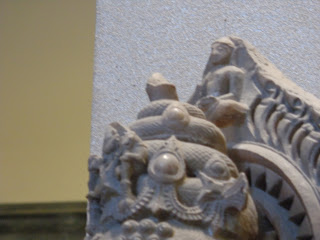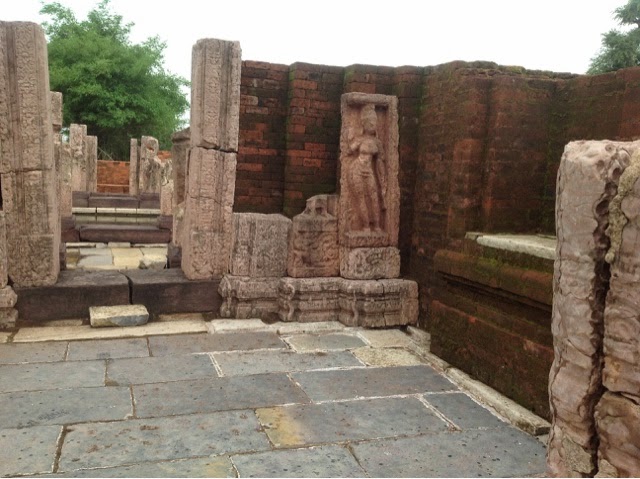History, Culture, and Society.
Friday, 5 January 2018
Wednesday, 22 June 2016
Temples of Bhubaneswar, Orissa, India.
Here are some pictures of the hindu temples of the temple city (Bhubaneswar). In regards to age, the temples are from about 6th century A.D to 12th century A.D. One can see the progression of hindu temple architecture over many centuries. The earliest temples were relatively simple in their outward structure with very few surface decorations. The surface of the the temples was relatively smooth all along. With time, the temples were adorned on the outside more profusely and the size of the temple also increased with the addition of rooms. The first two images are of temples from 6th to 8th century A.D. Compare them to the temples of 9-10th century A.D and 11-12th century A.D period (photos shown below) to see the progression of temple architecture in the Kalinga region i.e., Orissa region.
Below are hindu temples from 8th-9th century A.D:
Below are hindu temples from 10th-11th century A.D:
Hindu temples representing Kalinga architecture from 11th-12th century A.D:
Below are hindu temples from 10th-11th century A.D:
Hindu temples representing Kalinga architecture from 11th-12th century A.D:
Monday, 30 May 2016
Identification of Broken Sculpture Part from Tosham, Haryana.
This is a photograph of a broken part of some stone structure obtained from Tosham Hill (Bhiwani, Haryana). What could this be? Few possibilities are listed:
1. It could have been part of the pinnacle part of a toy temple, perhaps the temple being part of some larger scene. Points in favor of this assumption: presence of amalka like structure and presence of a 'kalash' (holy pot/vessel) like structure on top of it. This arrangement is typically seen in the structures of ancient temples of India. Point in contradiction of this assumption: Usually and almost certainly, only one amalka is present on temple tops. Here there are two amalka like structures.
2. The peak portion of 'mukut' (i.e., crown) seen in the sculptures of deities/kings etc. However
a crown is quite elaborately decorated and this stone structure is quite simple in appearance. As an example of the top portion of a crown is that of goddess saraswati shown in this photo (marble, 12th A.D, Rajasthan) where it shows a crown structure similar to the Tosham stone structure but with extensive decorations.
3. Another possibility (and the most serious one) is that the stone sculpture is the top part of a deitie's sceptre, possibly that of lord Vishnu. Below is a photograph of the top portion of Vishnu's sceptre, shown in stone. The similarity to the Tosham sculpture is uncanny.
Monday, 15 June 2015
The "Counting Skills" of Harappan People.
Harappan Civilization artefacts show the people had a sense for counting number of items i.e., 4 sticks or 7 fishes etc. This skill is evident from the drawings on pottery items excavated from that period. For example, one terracotta vessel shows a design where the painter made a motif consisting of 7 vertical lines and then repeated that 7 line motif throughout the surface of the pottery. On careful examination, one sees that the painter missed one line in few of the motifs i.e., drew 6 vertical lines instead of 7, but was able to count correctly in the next repeat motif on the vessel. This consistency in putting limits on the number of vertical strokes, and the number is a relatively big number i.e., 7 as opposed to a small number such as 2 strokes, indicates that people were aware of a number system. A small number of strokes such as 2, could easily be repeated without having to count i.e., via keeping visual symmetry of the motif in mind. But to draw 7 strokes in a repeating pattern would definitely require counting the number of strokes that the painter was painting. Another pottery painting shows a repeat pattern of 7 fish like items drawn vertically. One would need to count to draw 7 fishes exactly as has been done on the entire surface of the terracotta vessel ( a burial pot).
Monday, 6 October 2014
Friday, 3 October 2014
Excavated Buddhist Vihara of Sirpur (Chattisgarh, India).
These are photographs of excavated sculptures from a buried Buddhist vihara in Sirpur. One of the photographs shows a semi oval stone structure on the ground, which was where the horses of the visitors were probably tied before they entered the vihara. The vihara is dated to about 7th century C.E. Sirpur is an ancient place and its name finds mention in the travel books of the Chinese of that time. The city Sirpur fell on the ancient trade route. Large monasteries were usually found close to trade routes probably to facilitate donations from wealthy traders passing by.
Saturday, 20 September 2014
Subscribe to:
Comments (Atom)














































